Brought to you by: 由以下人員提供:
• Paragon—Ship every SaaS integration your customers want
• Paragon — 交付客戶所需的所有 SaaS 集成
• Lenny’s Talent Team—Hire the best product people. Find the best product gigs
• Lenny 的人才團隊——聘請最優秀的產品人員。尋找最佳產品演出
• Vanta—Automate compliance. Simplify security
• Vanta—自動實現合規性。簡化安全性
—
Mihika Kapoor is a design-engineer-PM hybrid at Figma, where she was an early PM on FigJam and is now spearheading development on a new product at the company that’s coming out this June. She’s known as the go-to person at Figma for leading new 0-to-1 products, and, as you’ll hear in our conversation, beloved by everyone she works with. Her background includes founding Design Nation, a national nonprofit focused on democratizing design education for undergraduates; spearheading product launches at Meta; and community building within the NYC AI startup scene. In our conversation, we discuss:
Mihika Kapoor 是 Figma 的設計工程師兼 PM 混合體,她是 FigJam 的早期 PM,現在正在該公司帶頭開發將於今年 6 月推出的新產品。她被稱為 Figma 領導 0 對 1 新產品的首選人物,正如您將在我們的談話中聽到的那樣,她深受與她合作的每個人的喜愛。她的背景包括創立 Design Nation,這是一家專注於使本科生設計教育民主化的全國性非營利組織;在 Meta 率先推出產品;以及紐約市人工智慧創業場景中的社區建設。在我們的對話中,我們討論:
How to effectively take ideas from 0 to 1 at larger companies
如何在大公司有效地將想法從 0 變為 1How to craft a compelling vision
如何打造令人信服的願景The importance of vulnerability and feedback
漏洞和反饋的重要性The role of intuition and product sense in making decisions
直覺和產品意識在決策中的作用How to practically communicate your vision
如何實際傳達您的願景How to balance collaboration and strong opinions
如何平衡協作和強烈的意見Advice for building a strong team culture
建立強大團隊文化的建議Pivoting with grace and enthusiasm
優雅而熱情地旋轉The current AI revolution and its impact on PM
當前的人工智慧革命及其對PM的影響
Some takeaways: 一些要點:
Putting ideas out there, even if they are wrong, can lead to better solutions and more productive discussions. It’s not just about having a great idea or building a prototype; it’s about actively engaging and rallying others around that idea to create momentum and excitement. Whether it’s pitching ideas at events like hackathons or simply asking colleagues for assistance, the key is to not let perceived limitations hold you back from pursuing your vision.
把想法放在那裡,即使它們是錯誤的,也可以帶來更好的解決方案和更有成效的討論。這不僅僅是有一個好主意或構建一個原型;這是關於圍繞這個想法積极參與和團結其他人,以創造動力和興奮。無論是在駭客馬拉松等活動中提出想法,還是只是向同事尋求幫助,關鍵是不要讓感知到的局限性阻礙你追求自己的願景。Mihika likens the role of a 0-to-1 team within a large company to that of Hestia in Greek mythology, who is the “keeper of the hearth.” It is Hestia’s job to always keep the hearth burning, even while other gods go out on separate quests. This means always keeping the 0-to-1 project alive and helping it spread to others, mostly through setting vision and building hype.
Mihika 將大公司中0對1團隊的角色比作希臘神話中的赫斯提亞,赫斯提亞是“壁爐的守護者”。赫斯提亞的工作是始終保持爐膛燃燒,即使其他神靈外出執行不同的任務。這意味著始終保持 0 對 1 專案的活力並説明它傳播給其他人,主要是通過設定願景和建立炒作。To set the vision for a new idea, ask: “If I and my team do our job correctly, what does the world look like?” Then convey the pain point, solution, and proof in a format that can “show, not tell” stakeholders what you’re doing. For example, use prototypes, Figma mock-ups, and customer testimonials.
要為一個新想法設定願景,請問:“如果我和我的團隊正確地完成了我們的工作,世界會是什麼樣子?然後,以一種可以“展示而不是告訴”利益相關者您在做什麼的格式傳達痛點、解決方案和證明。例如,使用原型、Figma 模型和客戶推薦。Internal hackathons are a great way to encourage innovation. Figma has a Maker Week where the entire company—including technical and non-technical employees—goes on pause for a week to work on ambitious ideas. Maker Week and other internal hackathons have led to many successful Figma products, including Jambot and Figma’s entire widget platform.
內部駭客馬拉松是鼓勵創新的好方法。Figma 有一個創客周,整個公司(包括技術和非技術員工)都會暫停一周,以制定雄心勃勃的想法。Maker Week 和其他內部駭客馬拉松催生了許多成功的 Figma 產品,包括 Jambot 和 Figma 的整個小部件平臺。Figma implements a fun “hot seat” tradition, where each person takes turns being in the hot seat for a set amount of time. During their turn, the person can be asked anything by the other members of the group. By understanding what motivates each team member and building strong relationships, collaboration becomes more effective, leading to a more enjoyable work environment and ultimately better outcomes for the product or project. The key is to create a comfortable and friendly atmosphere where everyone feels open to sharing.
Figma實施了一個有趣的“熱座”傳統,每個人都輪流坐在熱座上一段時間。在輪到他們時,小組的其他成員可以向該人提出任何要求。通過瞭解每個團隊成員的動機並建立牢固的關係,協作變得更加有效,從而帶來更愉快的工作環境,並最終為產品或項目帶來更好的結果。關鍵是要創造一個舒適友好的氛圍,讓每個人都願意分享。Make time for fun! “Play” is one of Figma’s core values, and Mihika makes a concerted effort to have enjoyable team gatherings. When people have fun together, they get to know each other more deeply and can feel more appreciated within the group. One tradition Mihika’s team uses is “The Figgies.” The team gathers to give out absurd awards for things like “most likely to go their entire career without writing a PRD.”
騰出時間玩樂!“玩”是 Figma 的核心價值觀之一,Mihika 齊心協力舉辦愉快的團隊聚會。當人們在一起玩得開心時,他們會更深入地瞭解彼此,並在團隊中感到更加欣賞。Mihika的團隊使用的一個傳統是“The Figgies”。該團隊聚集在一起,為諸如“最有可能的整個職業生涯都不寫珠三角”之類的事情頒發荒謬的獎項。
Listen now on Apple, Spotify, Overcast, and YouTube.
立即在 Apple、Spotify、Overcast 和 YouTube 上收聽。
Where to find Mihika Kapoor:
在哪裡可以找到米希卡·卡普爾:
• X: https://twitter.com/mihikapoor
• X:https://twitter.com/mihikapoor
• LinkedIn: https://www.linkedin.com/in/mihikakapoor/
• LinkedIn:https://www.linkedin.com/in/mihikakapoor/
Where to find Lenny: 在哪裡可以找到 Lenny:
• Newsletter: https://www.lennysnewsletter.com
• 時事通訊:https://www.lennysnewsletter.com
• X: https://twitter.com/lennysan
• X:https://twitter.com/lennysan
• LinkedIn: https://www.linkedin.com/in/lennyrachitsky/
• LinkedIn:https://www.linkedin.com/in/lennyrachitsky/
In this episode, we cover:
在本集中,我們將介紹:
(00:00) Mihika’s background
( 00:00) 美彥的背景
(04:29) Core attributes of great product managers
( 04:29) 優秀產品經理的核心特質
(07:34) Crafting a compelling vision
( 07:34) 打造引人入勝的願景
(12:12) The vision behind FigJam
( 12:12) FigJam 背後的願景
(18:25) Delivering a vision without design or engineering skills
( 18:25) 在沒有設計或工程技能的情況下實現願景
(21:52) Creating momentum
( 21:52) 創造動力
(26:36) The importance of strong conviction
( 26:36) 堅定信念的重要性
(27:45) Direct communication
( 27:45) 直接溝通
(32:48) Building hype ( 32:48) 建築炒作
(42:20) Immersing yourself in user insights
( 42:20) 讓自己沉浸在使用者洞察中
(47:16) Operationalizing user insights
( 47:16) 實施使用者見解
(50:33) Caring deeply about what you build
( 50:33) 深切關心你所構建的東西
(54:01) Finding passion in your work
( 54:01) 在工作中尋找激情
(57:00) Building a strong culture
( 57:00) 建立強大的文化
(01:07:07) Pivoting with grace and enthusiasm
( 01:07:07) 優雅而熱情地旋轉
(01:11:48) Design Nation
( 01:11:48) 設計國度
(01:13:15) Mihika’s weaknesses
( 01:13:15) 美彥的弱點
(01:16:07) Building new products at larger companies
( 01:16:07) 在大公司開發新產品
(01:20:50) Coming up with a great idea
( 01:20:50) 想出一個好主意
(01:22:49) The key to going from 0 to 1
( 01:22:49) 從 0 到 1 的關鍵
(01:26:47) Spreading the idea across the company
( 01:26:47) 在整個公司傳播這個想法
(01:29:15) Closing thoughts
( 01:29:15) 結束語
(01:32:11) Lightning round
( 01:32:11) 閃電
Referenced: 參考:
• Figma: https://www.figma.com/
• Figma:https://www.figma.com/
• Sho Kuwamoto on LinkedIn: https://www.linkedin.com/in/shokuwamoto/
• 桑本翔(Sho Kuwamoto)在LinkedIn:https://www.linkedin.com/in/shokuwamoto/
• The Medici Effect: What Elephants and Epidemics Can Teach Us About Innovation: https://www.amazon.com/Medici-Effect-Preface-Discussion-Guide/dp/1633692949
• 美第奇效應:大象和流行病可以教會我們什麼關於創新:https://www.amazon.com/Medici-Effect-Preface-Discussion-Guide/dp/1633692949
• FigJam: https://www.figma.com/figjam/
• 無花果:https://www.figma.com/figjam/
• Cognition: https://www.cognition-labs.com/
• 認知:https://www.cognition-labs.com/
• Devin: https://www.cognition-labs.com/introducing-devin
• 德文:https://www.cognition-labs.com/introducing-devin
• David Hoang on LinkedIn: https://www.linkedin.com/in/dhoang2/
• David Hoang 談 LinkedIn:https://www.linkedin.com/in/dhoang2/
• Replit: https://replit.com/
• 回復:https://replit.com/
• The Making of Maker Week at Figma: https://www.figma.com/blog/the-making-of-maker-week/
• Figma 創客周的製作:https://www.figma.com/blog/the-making-of-maker-week/
• Yuhki Yamashita on LinkedIn: https://www.linkedin.com/in/yuhki/
• Yuhki Yamashita發表在LinkedIn:https://www.linkedin.com/in/yuhki/
• Jeff Bezos’ Simple Decision-Making Framework Will Give You Clarity, Conviction, and Courage: https://medium.com/illumination/jeff-bezos-simple-decision-making-framework-will-give-you-clarity-conviction-and-courage-adf8d0183625
• 傑夫·貝佐斯(Jeff Bezos)的簡單決策框架將為您提供清晰、信念和勇氣:https://medium.com/illumination/jeff-bezos-simple-decision-making-framework-will-give-you-clarity-conviction-and-courage-adf8d0183625
• Alice Ching on LinkedIn: https://www.linkedin.com/in/aliceching/
• Alice Ching 發表在《LinkedIn:https://www.linkedin.com/in/aliceching/
• Karl Jiang on LinkedIn: https://www.linkedin.com/in/karl-jiang-4a07424/
• 卡爾·江 談LinkedIn:https://www.linkedin.com/in/karl-jiang-4a07424/
• Kris Rasmussen on LinkedIn: https://www.linkedin.com/in/kristopherrasmussen/
• 克裡斯·拉斯穆森(Kris Rasmussen)談LinkedIn:https://www.linkedin.com/in/kristopherrasmussen/
• Config: https://config.figma.com/
• 配置:https://config.figma.com/
• Dev Mode: https://www.figma.com/dev-mode/
• 開發模式:https://www.figma.com/dev-mode/
• Asana: https://asana.com/
• 體式:https://asana.com/
• Julie Zhuo on LinkedIn: https://www.linkedin.com/in/julie-zhuo/
• Julie Zhuo 發表在《LinkedIn:https://www.linkedin.com/in/julie-zhuo/
• StrengthsFinder test: https://www.gyfted.me/personality-quiz/strengthsfinder-test-free
• StrengthsFinder 測試:https://www.gyfted.me/personality-quiz/strengthsfinder-test-free
• Dylan Field on LinkedIn: https://www.linkedin.com/in/dylanfield/
• 迪倫·菲爾德 (Dylan Field) LinkedIn:https://www.linkedin.com/in/dylanfield/
• Vishal Shah on LinkedIn: https://www.linkedin.com/in/vishalnshah/
• 維沙爾·沙阿 (Vishal Shah) 談 LinkedIn:https://www.linkedin.com/in/vishalnshah/
• Design Disruptors: https://www.invisionapp.com/films/design-disruptors
• 設計顛覆者:https://www.invisionapp.com/films/design-disruptors
• Daniel Burka on LinkedIn: https://www.linkedin.com/in/dburka/
• 丹尼爾·布爾卡 (Daniel Burka) 談 LinkedIn:https://www.linkedin.com/in/dburka/
• Jamie Myrold on LinkedIn: https://www.linkedin.com/in/jamiemyrold/
• 傑米·邁羅爾德 (Jamie Myrold) 發表在《LinkedIn:https://www.linkedin.com/in/jamiemyrold/
• Design Nation: https://dn.businesstoday.org/
• 設計之國:https://dn.businesstoday.org/
• Stuart Weitzman on X: https://twitter.com/StuartWeitzman
• 斯圖爾特·韋茨曼(Stuart Weitzman)談X:HTTPs://twitter.com/StuartWeitzman
• Joe Gebbia on LinkedIn: https://www.linkedin.com/in/jgebbia/
• 喬·格比亞(Joe Gebbia)談LinkedIn:https://www.linkedin.com/in/jgebbia/
• Building a long and meaningful career | Nikhyl Singhal (Meta, Google): https://www.lennyspodcast.com/building-a-long-and-meaningful-career-nikhyl-singhal-meta-google/
• 建立長期而有意義的職業生涯 |Nikhyl Singhal(Meta、Google):https://www.lennyspodcast.com/building-a-long-and-meaningful-career-nikhyl-singhal-meta-google/
• Jambot: https://www.figma.com/community/widget/1274481464484630971/jambot
• Jambot:https://www.figma.com/community/widget/1274481464484630971/jambot
• Hestia: https://en.wikipedia.org/wiki/Hestia
• 赫斯提亞:https://en.wikipedia.org/wiki/Hestia
• Harry Potter series: https://www.amazon.com/Harry-Potter-Paperback-Box-Books/dp/0545162076
• 哈利波特系列:https://www.amazon.com/Harry-Potter-Paperback-Box-Books/dp/0545162076
• Pachinko: https://www.amazon.com/Pachinko-National-Book-Award-Finalist/dp/1455563927/
• 彈珠機:https://www.amazon.com/Pachinko-National-Book-Award-Finalist/dp/1455563927/
• Creativity, Inc.: Overcoming the Unseen Forces That Stand in the Way of True Inspiration: https://www.amazon.com/Creativity-Inc-Expanded-Overcoming-Inspiration/dp/0593594649
• Creativity, Inc.:克服阻礙真正靈感的看不見的力量:https://www.amazon.com/Creativity-Inc-Expanded-Overcoming-Inspiration/dp/0593594649
• The Overstory: https://www.amazon.com/Overstory-Novel-Richard-Powers/dp/039335668X
• The Overstory:https://www.amazon.com/Overstory-Novel-Richard-Powers/dp/039335668X
• Severance on AppleTV+: https://tv.apple.com/us/show/severance/umc.cmc.1srk2goyh2q2zdxcx605w8vtx
• AppleTV+ 上的遣散費:https://tv.apple.com/us/show/severance/umc.cmc.1srk2goyh2q2zdxcx605w8vtx
• Dune on Max: https://www.max.com/movies/dune/e7dc7b3a-a494-4ef1-8107-f4308aa6bbf7
• 最大沙丘:https://www.max.com/movies/dune/e7dc7b3a-a494-4ef1-8107-f4308aa6bbf7
• Dune: Part 2: https://www.dunemovie.com/
• 沙丘:第 2 部分:https://www.dunemovie.com/
• Arc browser: https://arc.net/
• Arc 瀏覽器:https://arc.net/
• Pika: https://pika.art/home
• 鼠兔:https://pika.art/home
• The power of recognition: Why you should celebrate your employees | Josh Miller: https://www.lennyspodcast.com/videos/the-power-of-recognition-why-you-should-celebrate-your-employees-josh-miller/
• 認可的力量:為什麼要慶祝你的員工 |喬什·米勒:https://www.lennyspodcast.com/videos/the-power-of-recognition-why-you-should-celebrate-your-employees-josh-miller/
Production and marketing by https://penname.co/. For inquiries about sponsoring the podcast, email podcast@lennyrachitsky.com.
https://penname.co/ 生產和銷售。有關贊助播客的查詢,請發送電子郵件 podcast@lennyrachitsky.com。
Lenny may be an investor in the companies discussed.
Lenny可能是所討論公司的投資者。



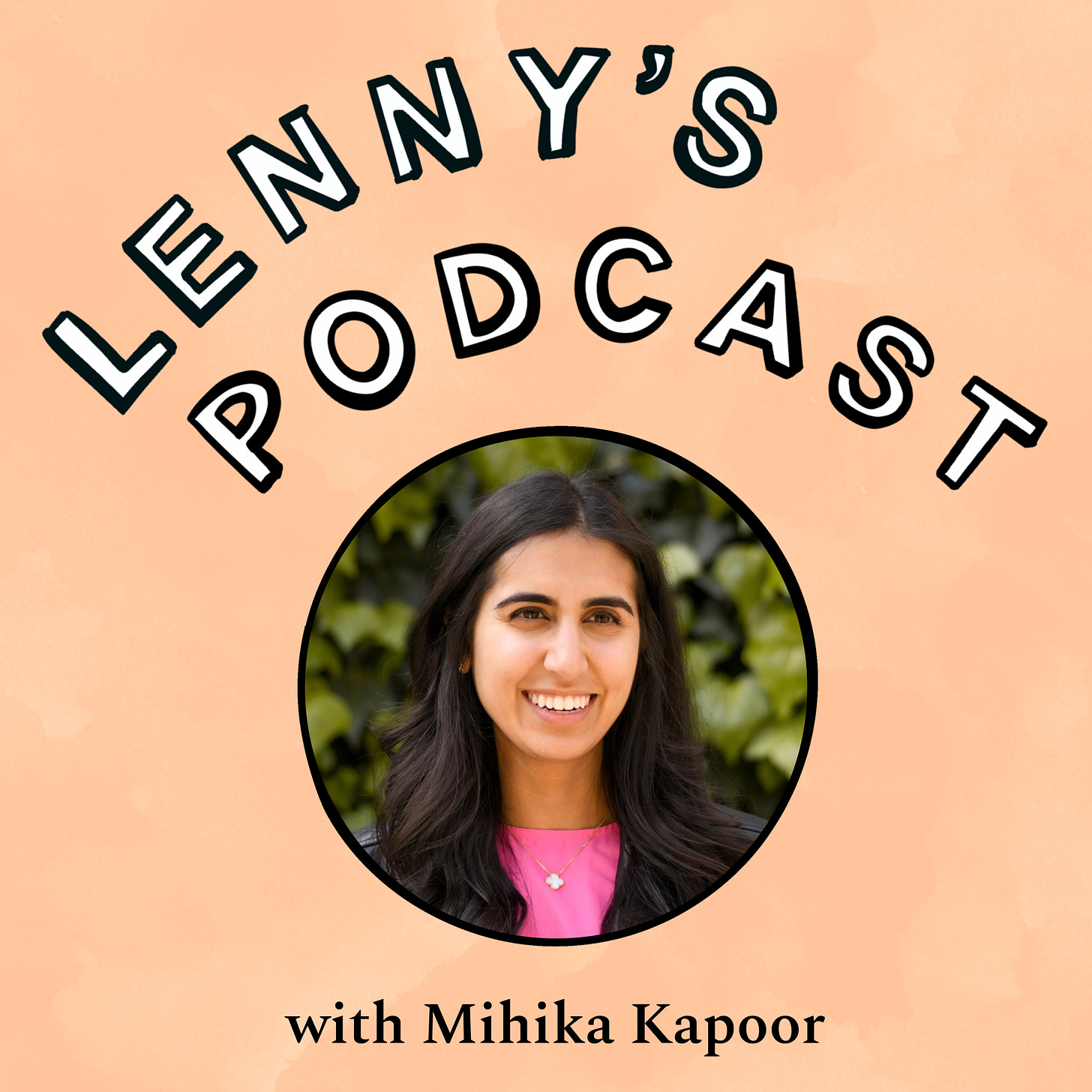









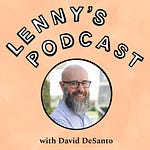
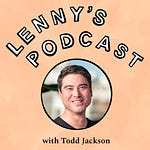

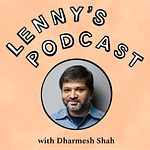
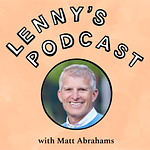

Fantastic! So important to cover every voice from the product creation process.
匪夷所思!覆蓋產品創建過程中的每一個聲音非常重要。
Really enjoyed this deep dive with Mihika and her conviction shone through. So many amazing touches to this podcast. Definitely worth a second listen!